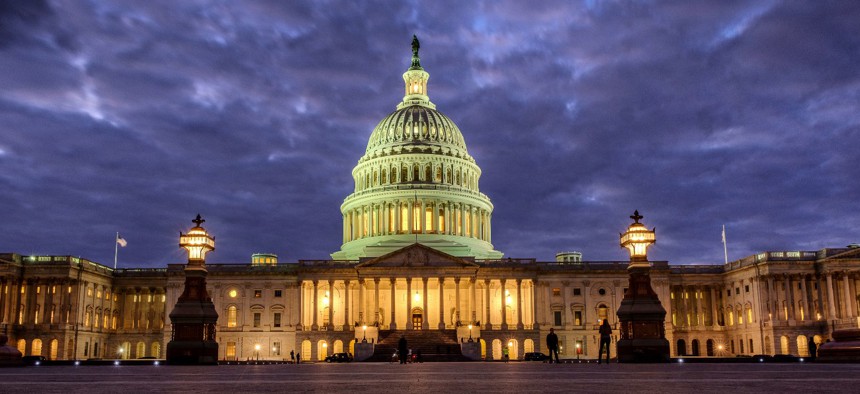
J. David Ake / AP file photo
Trump Signs Shutdown-Averting Stopgap Spending Bill
Measure will keep agencies funded through Dec. 11.
The Senate on Wednesday approved 84-10 a stopgap spending bill, sending the measure to President Trump for his signature just hours before the deadline to avoid a government shutdown.
The continuing resolution will keep agencies funded at fiscal 2020 levels through Dec. 11. Absent congressional action, agencies would have been forced to close their doors Thursday morning. While Trump technically missed the midnight deadline to sign the CR before appropriations lapsed, he did so upon returning to the White House after attending a campaign rally in Minnesota. The Office of Management and Budget had instructed agencies not to begin any shutdown activities during the brief, 50-minute lapse.
Despite the 11th hour approval, the measure advanced with relatively little drama. The House easily passed the CR last week with broad, bipartisan support and its fate in the Senate was never really in doubt. The chamber likely would have passed the bill faster, but Democrats tacked on procedural hurdles to express their opposition to Republicans moving forward with the process of approving a new Supreme Court justice before the election.
Lawmakers and the White House reached a deal on the stopgap bill last week after Democrats acceded to Republican demands for a shorter measure and the two sides agreed to include relief funds for farmers impacted by the novel coronavirus pandemic and President Trump’s trade disputes in exchange for spending on nutritional programs. Congressional Democrats and the White House previously agreed to separate spending talks from negotiations over another economic relief package in response to the novel coronavirus pandemic.
The CR includes $1.5 billion in funding for the Census Bureau. It sets restrictions on federal agencies seeking to furlough any employees while the CR is in effect. It allows U.S. Citizenship and Immigration Services to charge a premium on its fees for certain cases, helping the agency offset the losses it sustained during the pandemic and as a result of Trump administration initiatives. USCIS had notified more than 13,000 employees it planned to furlough them as a result of the budget shortfall, but ultimately walked back that threat.
The measure gives $18 million to the General Services Administration to provide real estate and conduct activities related to the presidential transition. It would also extend contractors’ ability to seek reimbursement for employee sick leave during the pandemic. The Office of Personnel Management, which briefly threatened to furlough employees last year, would receive authority to transfer money from its trust funds to offset losses from turning over background check responsibilities to the Defense Department.
Even with funding for agencies into December now in place, another stopgap measure could become necessary if the lame duck Congress decides to punt on line-by-line spending measures in the weeks immediately following the election. The House has passed 10 of the 12 annual appropriations bills, but those were agreed to largely without Republican support. The Senate has yet to approve any of its bills, even at the committee level.







